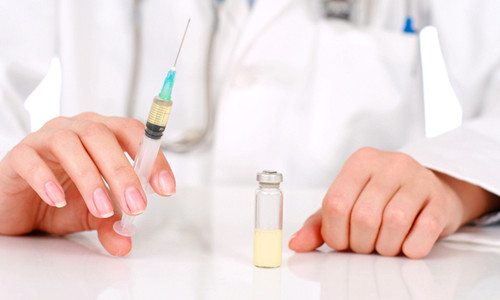J&J-led coalition launches a landmark efficacy study for an HIV mosaic vaccine
December 4, 2017
Source: Endpts;
 684
684

For decades now, investigators have been drawn to HIV vaccine research — a Holy Grail in anti-viral research that would have an enormous impact in a world that still sees two million new infections every year.
Now J&J is stepping forward and spearheading the first efficacy study — HVTN 705/HPX2008, also known as “Imbokodo” — of a new, so-called mosaic vaccine that is enrolling 2,600 African women to check on its ability to quell the spread of the lethal virus.
GlaxoSmithKline, meanwhile, simultaneously announced its plans to start their own Phase III study of long-acting cabotegravir to see if it can effectively shut down the spread of HIV. Their researchers at ViiV will be testing the drug in 3,200 women in sub-Saharan Africa.
HIV has defeated repeated vaccine programs, largely because of the way it can mutate rapidly, offering a puzzling and constantly shifting genetic diversity that creates a plethora of subtypes around the world.
To counter that, researchers with J&J pieced together vaccines that rely on multiple genes from a wide variety of subtypes, looking for a complex profile that would trigger an immune response regardless of where it was used around the world. Another study — HVTN 702 — has a different vaccine under the microscope.
In animal studies using non-human primates, the vaccine wound up with an efficacy rate of 66%, said Johan Van Hoof, Janssen R&D chief for Infectious Diseases & Vaccines. And researchers were able to come up with the biomarkers needed to check effective immune responses in healthy volunteers, which also checked out.
So what concentration would need to be protected in order to stem the epidemic?
Going as low as 50% would still deliver a marked impact on the kinetics of the disease, says Van Hoof. And studies suggest that even as low as 30% could have an effect.
Researchers will find out a lot more as they track their subjects over an initial 2-year period, with plans to continue to follow subjects to check on durability. But under the best of circumstances, says the scientist, it would probably take 5 years to get a vaccine in use around the world.
I asked Van Hoof how many people would need to be vaccinated globally to stop HIV, and he paused for a moment before replying: “That’s the one billion dollar question.”
In the meantime, researchers are still seeking a cure, looking to eradicate the reservoirs of virus that can remain hidden in cells while drug cocktails keep the lid on AIDS.
J&J is backed by a large coalition that includes support from the Gates Foundation as well as NIAID and a wide range of groups ranging from Harvard and MIT to the US Military HIV Research Program at the Walter Reed Army Institute of Research.
By Ddu
Read more on
- Disposable Medical Products that Keep Your Medical Facility Clean and Sterile March 31, 2022
- 10 Triumphant Drug Launches Of The Decade August 26, 2021
- How are Vaccines Stored? December 6, 2020
- Why do Vaccines need to be Refrigerated? December 5, 2020
- BioNTech & InstaDeep launch AI innovation lab for next-generation vaccines and biopharmaceuticals November 28, 2020
your submission has already been received.
OK
Subscribe
Please enter a valid Email address!
Submit
The most relevant industry news & insight will be sent to you every two weeks.



